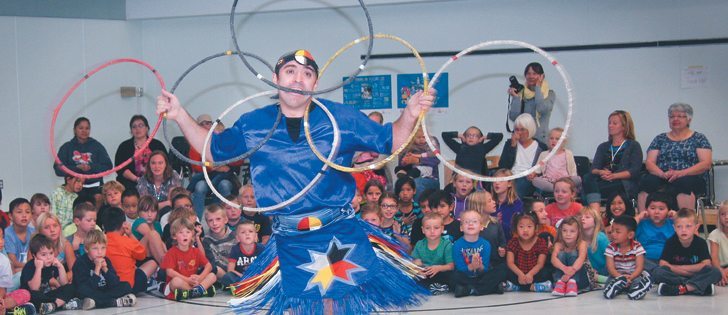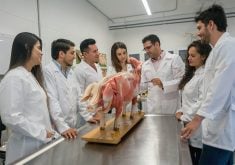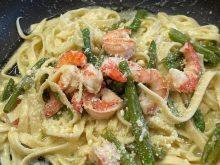ROSTHERN, Sask. — When Teddy Anderson returned home to Canada from Rwanda in the 1990s, he had a tough time being nice to people. It wasn’t until he saw his future teacher, Ojibwa Scott Ward, perform the hoop dance that that changed.
“I felt it was a way of moving past what I was going through. And so it was a way of healing,” Anderson said.
He now travels the world spreading his message of understanding.
“I believe that it’s kind of like my mission to help people, help teach people that we’re essentially one family … the differences we create are fabricated, they’re not actually real,” he said.
Anderson performs the traditional aboriginal hoop dance at schools, conferences and other events, speaking about the circle and how everything in life is connected.
“My understanding and the healers, these medicine men would use (the hoop dance) as a way to gain a deeper understanding of our reality,” he said.
Growing up, Anderson travelled the world with his parents, who worked for the United Nations.
Ward taught him the dance and at the age of 15, he was welcomed into the Ojibwa tribe. Anderson is a Canadian with Persian, English, Scottish and Norwegian ancestry.
Read Also

Fuel rebate rule change will affect taxes and AgriStability
The federal government recently announced updates to the fuel rebates that farmers have been receiving since 2019-20.
First Nations tribes have been generally receptive to Anderson performing the hoop dance.
“I explain how I’m honouring the tradition that was given to me and I have cultural permission to do this and I’m not hiding who I am. I’m not pretending to be someone that I’m not.”
In Anderson’s performances, he begins with a song on the flute that honours the First Nation people and the history of the land. That is followed by a prayer in aboriginal sign language to explain symbolism.
“I do two hoop dances with 30 hoops where I explain the meanings of working together as a global family because each hoop is a different colour,” Anderson said.
He finishes by asking members of the audience to come and dance with him, followed by questions and answers.
Last month, Anderson performed for students at Rosthern Elementary School.
Jacquie Thiessen, a kindergarten teacher at Rosthern, said that the students enjoyed Anderson’s performance.
“Sometimes kids hear the same message from teachers everyday but when it’s brought in, someone from the outside, especially someone with such skills like that, it really makes an impact,” she said.
Anderson lives with his wife, a school teacher, and family in Victoria, where he earned a degree in child and youth care from the University of Victoria.
“She loves (my work) and she thinks what I do is very, very important for the education world,” Anderson said.
His degree taught him about therapy and relationships, which he uses during his performances.
“What I’m trying to do with the hoop dance is actually create a therapeutic space onstage where people can unload what they’re dealing with and process what they’re dealing with,” he said.
Last year, he released his first children’s book, The Medicine Wheel Stories of a Hoop Dancer.
“(The book is) really about teaching kids about whether you’re First Nations or European descent or wherever you’re from, we all be-long to one human family,” said Anderson.
For more information, visit hoopdanceproductions.com.
Dance details
- It is a form of storytelling.
- It provides a connection to the past.
- It passes on knowledge from one generation to the next.















